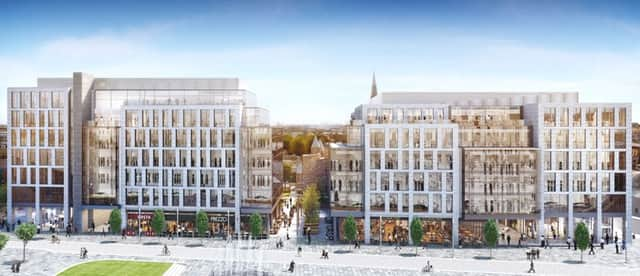Commercial property: Successfully creating a sense of place


In an era of flattening workplace hierarchies and more collaborative working, chief executives and interns are more likely to share desk space than ever before. It is not as aspirational as it once was to have your own office.
Creating a sense of place – “place-making” in industry terminology – is at the heart of Scotland’s progressive property industry.
Advertisement
Hide AdAdvertisement
Hide AdIt requires the commitment, collaboration and expertise of developers, landlords, architects and agents.
What’s more, place-making requires the industry’s active participation to ensure that all developments provide the community and business benefits they had on the drawing board.
Place-making creates tremendous opportunities and increasingly the advantages of this approach are being acknowledged by both national and local government.
But to create places we need a thriving development industry and it is clear that the government is realising that this sector matters.
This year the Scottish Government brought in legislation establishing that no rates would be paid until a property returns an income, opening up the potential for more speculative development – especially in the cities – and the industry is responding.
That positive relationship with Holyrood has been maintained with Derek Mackay, Cabinet Secretary for Finance, engaging with the Scottish Property Federation (SPF) and promoting Scotland to investors.
We don’t always agree, but there is a constructive understanding on both sides.
In March, the SPF published a report in conjunction with the Fraser of Allander Institute, which established that the Scottish real estate industry contributes almost £4.8 billion to the Scottish economy and supports more than 92,000 jobs. For every £100 million of commercial property demand, £73m is created for the economy.
Advertisement
Hide AdAdvertisement
Hide AdPlace-making involves society, government and industry engaging positively. It is a key tenet of the vision behind the new planning bill.
However, there is cause for concern with the current status of the bill as it has been seriously amended since being introduced by the government to Holyrood.
Unfortunately, the bill now applies major burdens on planning services and central government, which will likely frustrate development rather than support it.
And then there is the spectre of third-party right of appeal. The industry already consults and participates in early engagement. It employs great expertise to create the right solutions for a site –socially, geographically and physically.
Greater public trust in the planning system can always be enhanced, but it will not be achieved if every decision can be appealed and the views of more vocal objectors prevent all others from being heard.
At the same time, we risk losing development capital as investors find safer places to commit their funds.
But the Scottish property industry has had tremendous successes. Quartermile in Edinburgh, the Dundee Waterfront, Marischal Square in Aberdeen and River Clyde developments have not only created quality environments but also provided catalysts for economic development.
These award-winning developments capture the principles of people, a variety of property uses and connectivity – from transport links to broadband – to make them a success.
Advertisement
Hide AdAdvertisement
Hide AdAnd, to my point at the start, their legacy is achieved through a vast array of skills working in partnership.
It works. And as I end my year in office, I would like to see this more widely acknowledged and celebrated.